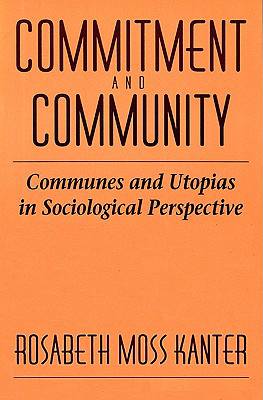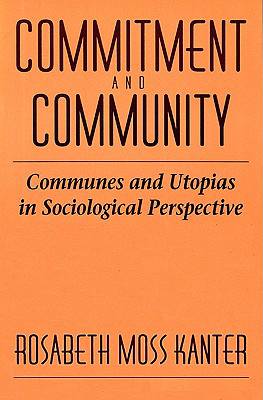
Door een staking bij bpost kan je online bestelling op dit moment iets langer onderweg zijn dan voorzien. Dringend iets nodig? Onze winkels ontvangen jou met open armen!
- Afhalen na 1 uur in een winkel met voorraad
- Gratis thuislevering in België vanaf € 30
- Ruim aanbod met 7 miljoen producten
Door een staking bij bpost kan je online bestelling op dit moment iets langer onderweg zijn dan voorzien. Dringend iets nodig? Onze winkels ontvangen jou met open armen!
- Afhalen na 1 uur in een winkel met voorraad
- Gratis thuislevering in België vanaf € 30
- Ruim aanbod met 7 miljoen producten
Zoeken
Commitment and Community
Communes and Utopias in Sociological Perspective
Rosabeth Moss Kanter
Paperback | Engels
€ 66,45
+ 132 punten
Omschrijving
What makes some communes work, while others fail? Why is it so difficult to put utopian ideals into practice? In this exciting study of the success or failure of nineteenth-century American Utopias and twentieth-century communes, Rosabeth Moss Kanter combines the results of her first-hand experiences in a variety of contemporary groups with her thorough research on earlier Utopian communities. Convinced that the Utopias of the past offer important models for social organization today, the author also stresses the need for a historical perspective in viewing contemporary movements. Kanter analyzes the ideas and values expressed and developed in communal living, she explores the methods of organization that led to commitment and success or failure in the nineteenth-century, and she deals with the dilemmas and problems that contemporary communities present. The final chapters of this brilliant study, a discussion of contemporary communes, allows the reader to see the similarities as well as the differences between nineteenth and twentieth-century communities.
Specificaties
Betrokkenen
- Auteur(s):
- Uitgeverij:
Inhoud
- Aantal bladzijden:
- 320
- Taal:
- Engels
Eigenschappen
- Productcode (EAN):
- 9780674145764
- Verschijningsdatum:
- 1/01/1972
- Uitvoering:
- Paperback
- Formaat:
- Trade paperback (VS)
- Afmetingen:
- 140 mm x 211 mm
- Gewicht:
- 399 g

Alleen bij Standaard Boekhandel
+ 132 punten op je klantenkaart van Standaard Boekhandel
Beoordelingen
We publiceren alleen reviews die voldoen aan de voorwaarden voor reviews. Bekijk onze voorwaarden voor reviews.











